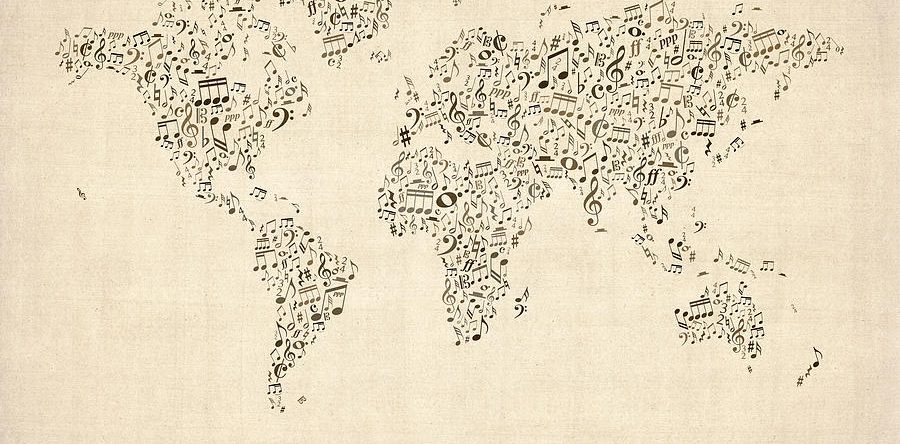Within The Sound Perimeter: Music As A Universal Language

Table of Contents
The Emotional Core of Music
Evoking Universal Emotions
Music's ability to evoke powerful emotions is arguably its most compelling aspect. Regardless of cultural background, we respond to music's emotional cues. Joyful melodies lift our spirits, sorrowful tunes move us to tears, and suspenseful harmonies heighten our anxiety. This emotional resonance transcends linguistic barriers, proving music's capacity to connect us on a deeply human level.
- Examples of universally understood musical emotions:
- Joy: Upbeat tempos, major keys, and repetitive rhythmic patterns often convey joy, as seen in celebratory anthems from around the world (e.g., traditional wedding marches, festive folk dances).
- Sorrow: Slow tempos, minor keys, and melancholic melodies often express sorrow, as exemplified in mourning songs and elegies across cultures. Think of the somber beauty of Irish keening or the mournful strains of a flamenco lament.
- Fear: Dissonant harmonies, sudden changes in dynamics, and unsettling rhythmic patterns can create a sense of unease and fear, a technique utilized effectively in film scores worldwide.
The specific musical elements contributing to these emotional responses—tempo, melody, harmony, rhythm, and dynamics—are largely independent of cultural context.
The Neuroscience of Musical Emotion
Scientific research supports the emotional power of music. Studies have shown that music triggers the release of neurochemicals like dopamine and endorphins, associated with pleasure, reward, and emotional bonding. These neurochemical responses occur similarly across cultures, suggesting a biological basis for our emotional connection to music. Further research into the brain's response to music continues to illuminate the neurological underpinnings of this universal language.
Rhythmic and Melodic Universals
The Power of Rhythm
Rhythm is fundamental to human experience, shaping our movements, speech patterns, and even our physiological processes. Music capitalizes on this inherent human affinity for rhythm, employing rhythmic patterns that resonate across cultures. From the pulsating beats of African drumming to the intricate rhythms of Indian classical music, rhythmic structures play a vital role in social bonding, ritualistic practices, and communal experiences worldwide.
- Examples of cross-cultural rhythmic patterns:
- The use of polyrhythms (multiple rhythms played simultaneously) is found in many musical traditions, from West Africa to Latin America.
- Simple, repetitive rhythmic patterns are used in lullabies and children's songs globally.
- Syncopation (emphasizing off-beats) is a rhythmic device that adds excitement and interest across various musical styles.
Melodic Structures and Patterns
Beyond rhythm, certain melodic structures exhibit remarkable cross-cultural prevalence. The pentatonic scale, for example, a five-note scale, appears in diverse musical traditions across the globe, suggesting an inherent human preference for specific melodic contours.
- Examples of cross-cultural melodic elements:
- The pentatonic scale's simplicity and appealing intervals are found in folk music from various regions.
- Certain melodic intervals (e.g., major thirds, perfect fifths) create a sense of consonance and resolution that are universally pleasing.
- Similar melodic phrases and motifs can be identified in seemingly disparate musical traditions, suggesting a shared musical grammar.
Music as a Tool for Communication and Storytelling
Narrative in Music
Even without lyrics, music can tell compelling stories. Changes in tempo, dynamics, and instrumentation act as narrative devices, creating a sense of drama, suspense, or resolution. This ability to convey complex emotions and narratives without words speaks to the power of music as a universal communication tool.
- Examples of narrative in instrumental music:
- Film scores utilize music extensively to enhance the emotional impact of storytelling.
- Classical orchestral works often depict narratives or evoke specific moods through changes in musical texture and form.
- Improvisational music, such as jazz, allows musicians to create spontaneous narratives in real-time.
Music and Cultural Identity
While music transcends cultural boundaries, it also deeply reflects cultural identity. Musical styles are shaped by cultural values, beliefs, and historical experiences. However, the underlying principles of rhythm, melody, and harmony often connect disparate musical traditions, creating a sense of shared humanity. Musical fusion, the blending of different musical styles, highlights the interplay between cultural specificity and universal appeal.
- Examples of cultural influence on music:
- The blues, jazz, and rock and roll styles arose from the African American experience in the United States but have had a global impact.
- Traditional folk music styles often reflect specific regional histories, beliefs, and social structures.
Music Therapy and its Global Reach
The Healing Power of Music
The therapeutic power of music has been recognized across cultures for centuries. Music therapy employs music interventions to address physical, emotional, cognitive, and social needs. Its effectiveness in treating a range of conditions, from anxiety and depression to physical rehabilitation, demonstrates the universality of music's healing properties.
- Examples of music therapy applications:
- Music therapy can reduce stress and anxiety in healthcare settings.
- Music can improve cognitive function and memory in individuals with dementia.
- Rhythmic movement activities can improve motor skills and coordination.
Conclusion:
Music's ability to evoke universal emotions, its reliance on shared rhythmic and melodic patterns, its role in communication and storytelling, and its therapeutic applications all point to its status as a truly universal language. It connects us on a deeply human level, bridging cultural divides and fostering a sense of shared humanity. Embrace the power of music as a universal language – explore different genres, listen actively, and discover the profound connections it can forge across cultures and communities. The universal language of music awaits your exploration!

Featured Posts
-
 Another Baby For Peppa Pig We Reveal The Gender
May 22, 2025
Another Baby For Peppa Pig We Reveal The Gender
May 22, 2025 -
 Gas Prices In Columbus Ohio A 48 Cent Spread
May 22, 2025
Gas Prices In Columbus Ohio A 48 Cent Spread
May 22, 2025 -
 Analiz Rinku Finansovikh Poslug Ukrayini Lideri 2024 Roku
May 22, 2025
Analiz Rinku Finansovikh Poslug Ukrayini Lideri 2024 Roku
May 22, 2025 -
 Ea Fc 24 Fut Birthday Team Tier List Of Top Players
May 22, 2025
Ea Fc 24 Fut Birthday Team Tier List Of Top Players
May 22, 2025 -
 Javier Baez Recuperacion Y Productividad En El Campo
May 22, 2025
Javier Baez Recuperacion Y Productividad En El Campo
May 22, 2025
